Ukraine ’44 is aa MMP magazine game. Loosely labelled under the IGS group of games.
This design is fairly novel.
From BGG:
Ukraine ‘44 is a simulation game that focuses on one of the pivotal moments of the Soviet Winter Offensive in Ukraine in 1943 and 1944.
Over the course of a week, the Axis 1st Panzer Army was cut off and encircled by strong Soviet forces of the 1st and 2nd Ukrainian Fronts and like its brothers at Stalingrad and Korsun, expected to be destroyed. In what would called the battle of the Kamenets-Podolsky Pocket (or Hube’s Pocket), the Germans would fight and claw their way out and finally escape. Hube’s successful operation to escape encirclement is still studied to this day as a model of how to breakout from a pocket.
Ukraine ’44 is part of the International Games Series (IGS) from Multi-Man Publishing (MMP).
Originally published in Special Ops magazine issue #2 (Winter 2012).
Game Scale:
Turn: 2 days
Hex: 3.1 miles / 5 km
Units: Division to Corps
Game Inventory (Special Ops #2 edition):
One 22 x 34″ full-dolor mapsheet
One dual-side printed countersheet (280 1/2″ counters)
One 8-page Ukraine ’44 rule booklet.
What follows is a game play AAR style report. This is not a review. A brief capsule over view video will follow once both parts of the AAR are published.
You can see game play and discussion here:
&

Overall the Soviets make some solid blunders in the opening move. Which dare I say made for a hard slog in the game play going forward.
During Turn 1 and 2 they took these Guard units in red and lunged deeply towards the River Dnestr. 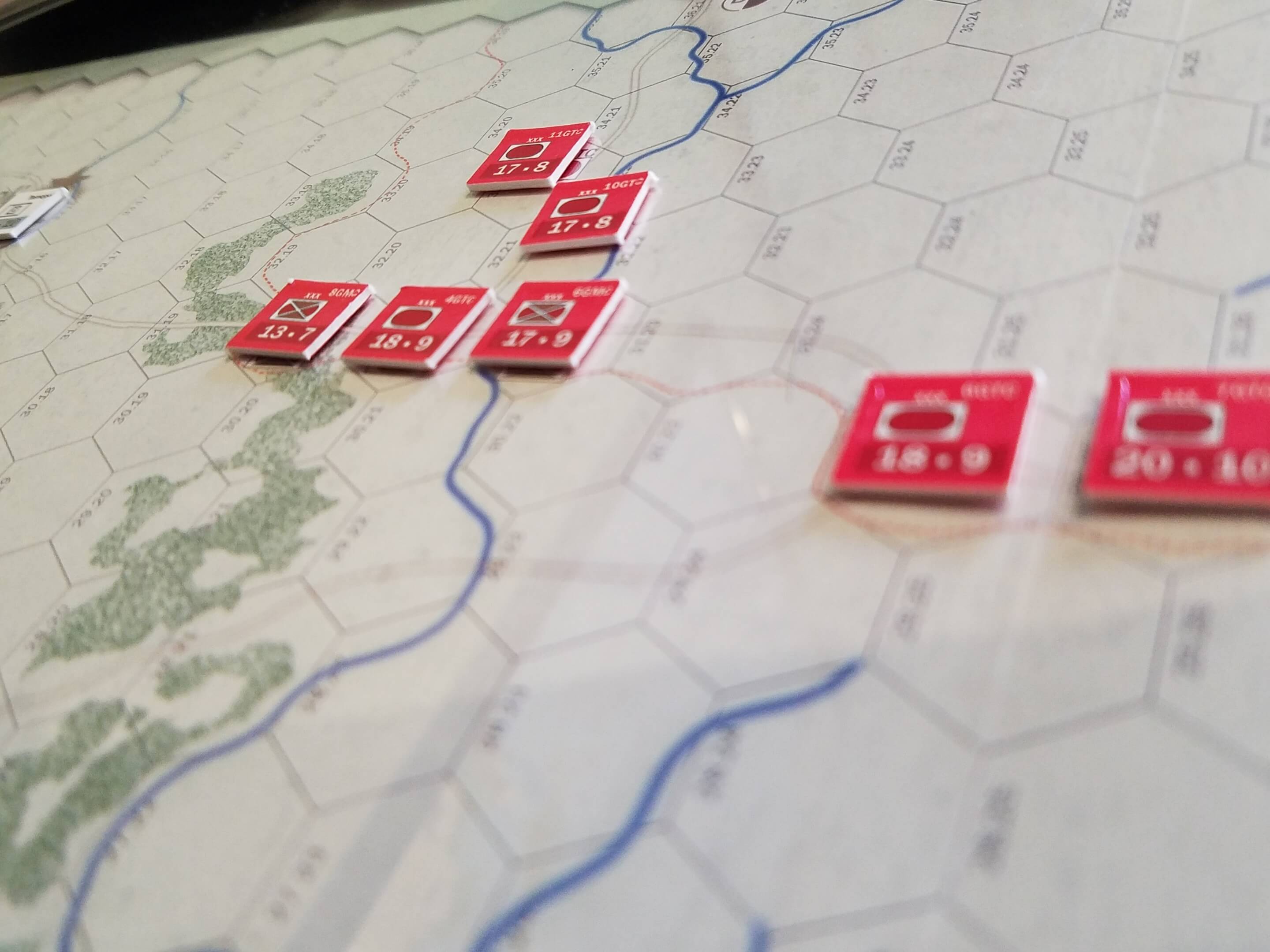
Such that by end of Turn 1 they were a move away from the River, as seen below.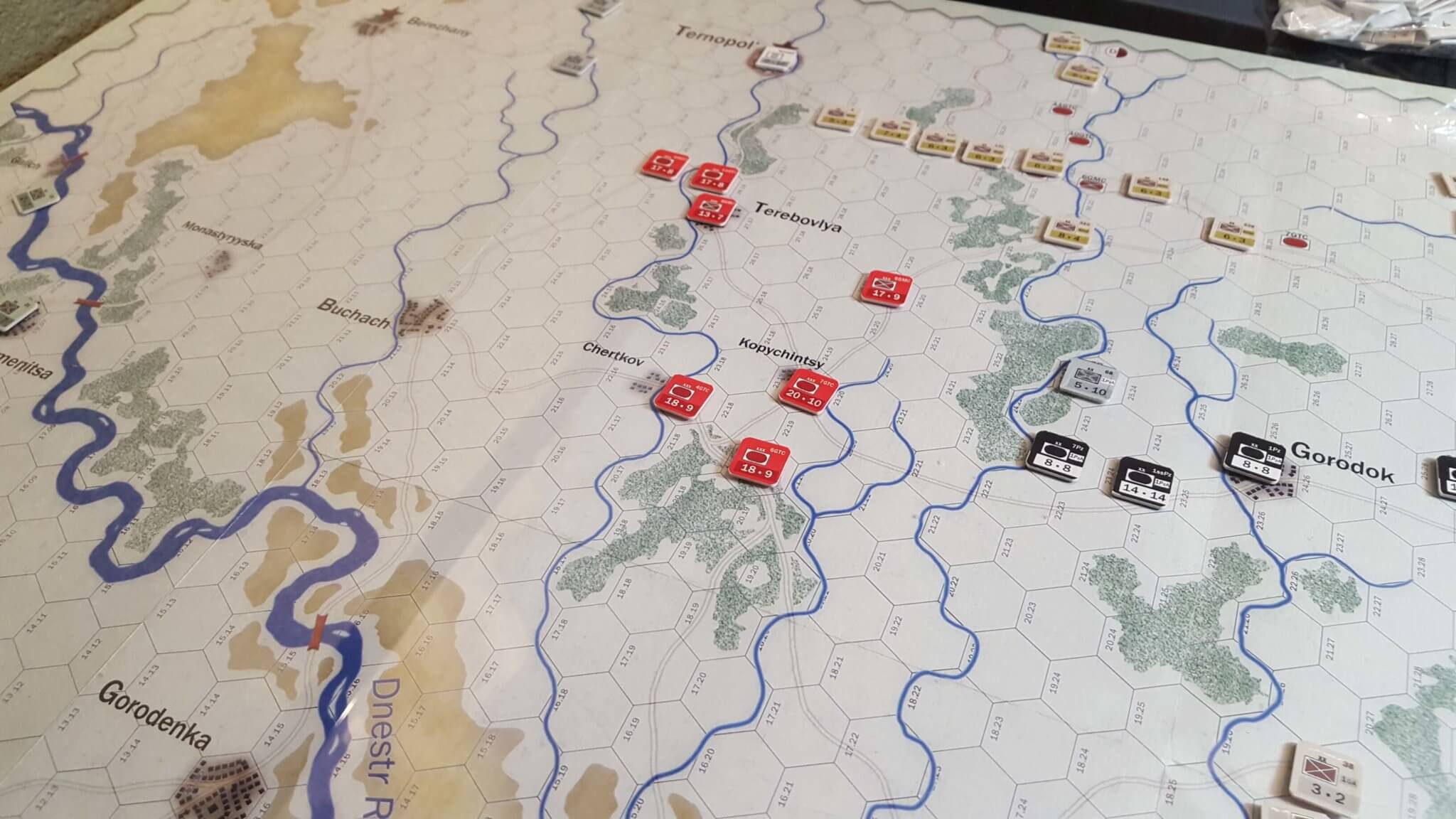
This of course caused the faster moving more mobile [Germans have two moves a turn for mech] to collapse in part form Gorodok to cover the Dnestr bridge approaches.
The Southern crossing of the Dnestr went well but was not reinforced deeply enough.
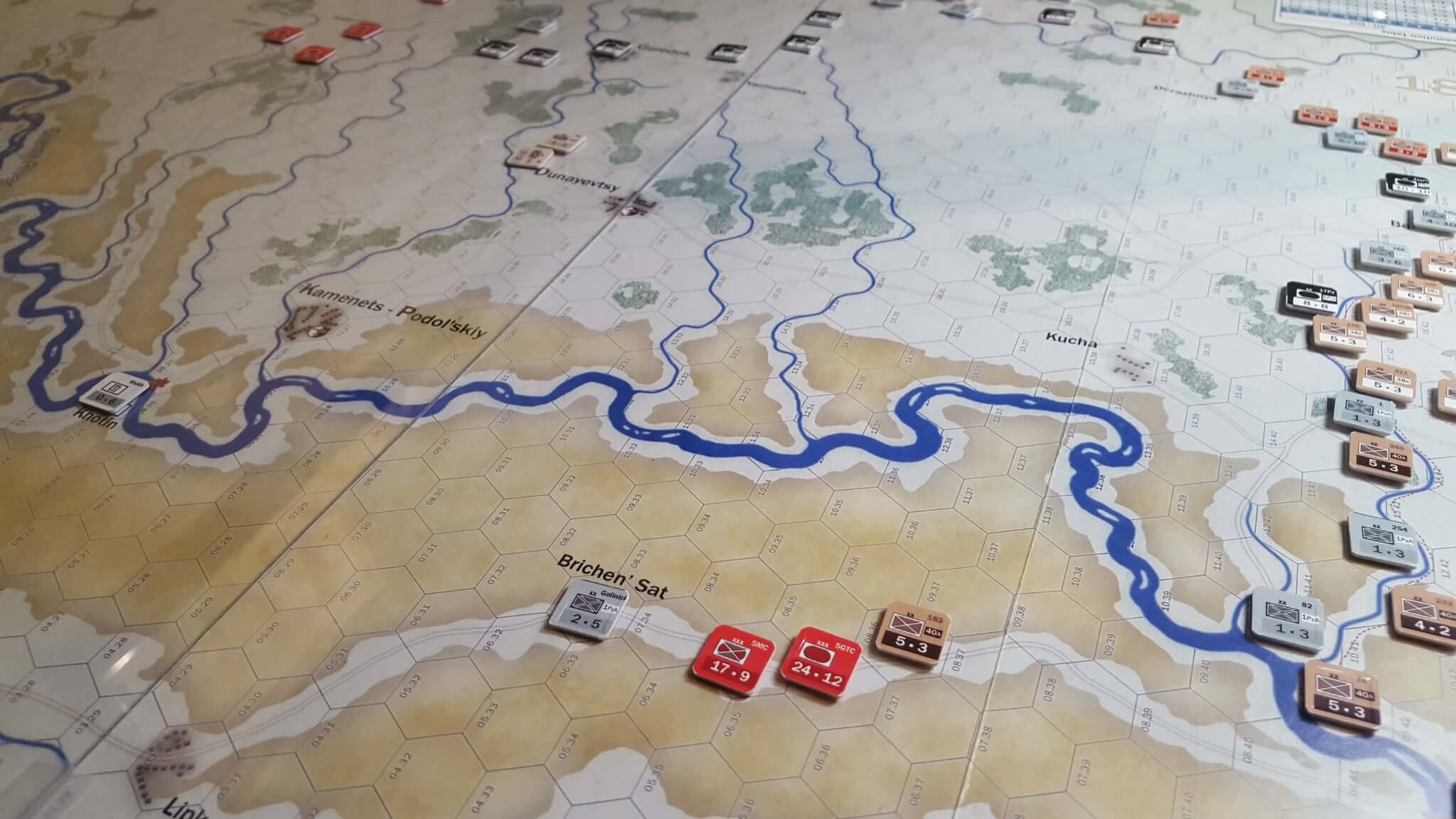
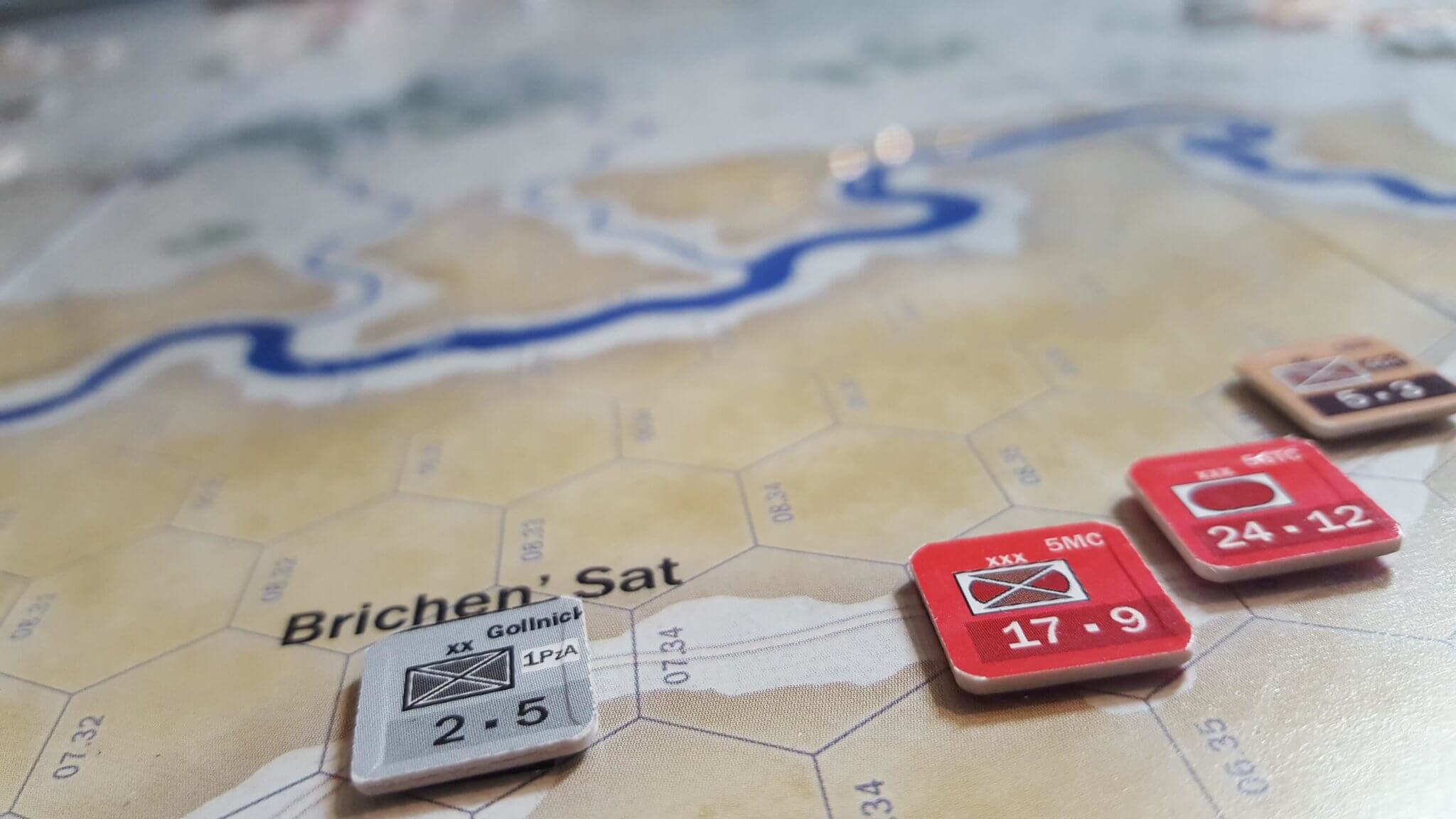
The 1PzA unit here really hung tough. Forcing a delay.
Further North and along other rivers and streams Infantry units with high defensive values fought valiant delaying actions and even counter attacked in places. This knock several Soviet force out of game and or weakened them significantly enough to be combat ineffective.
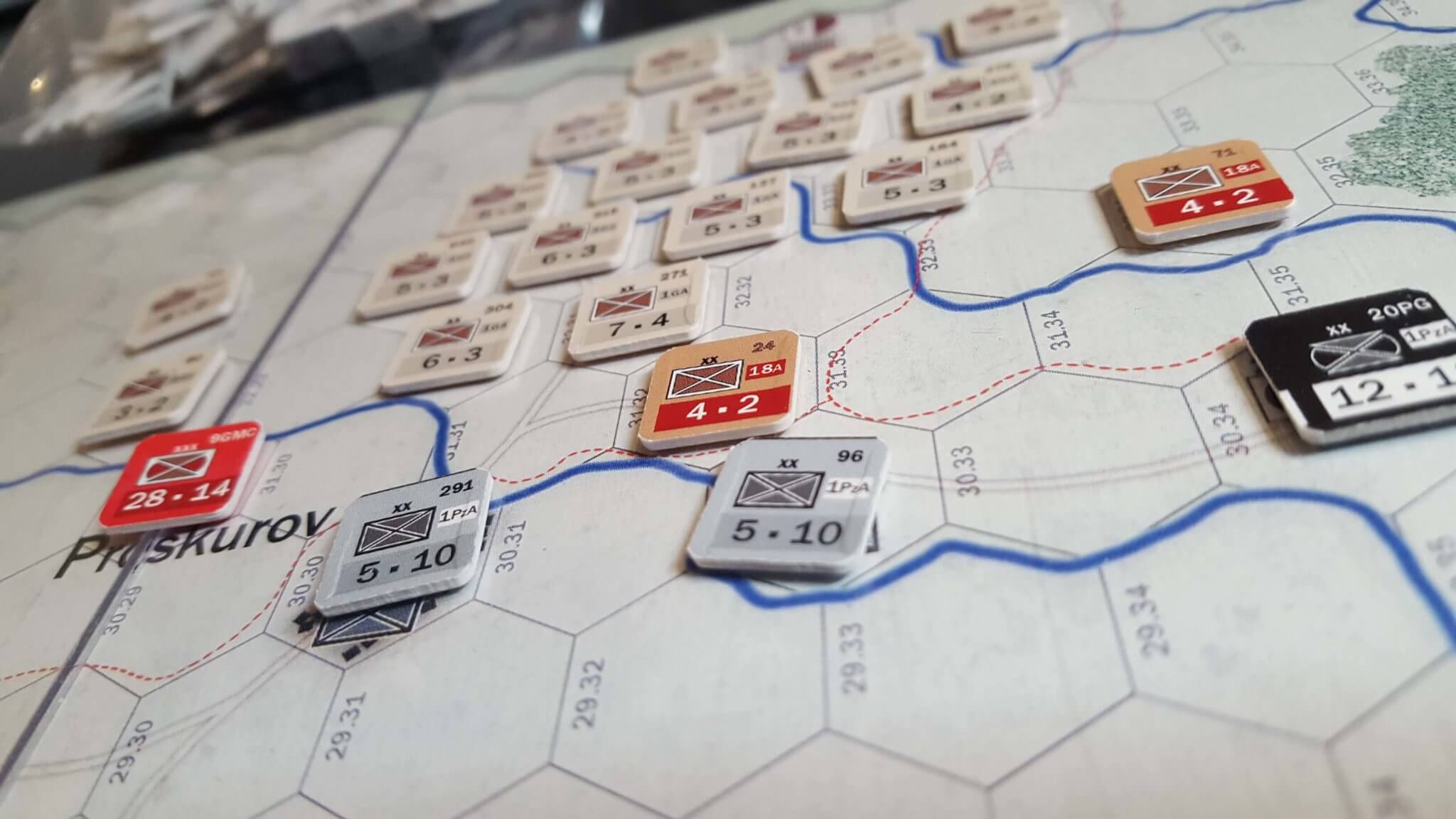
Back in the pocket the SS units played a delaying game, supported by Tigers.
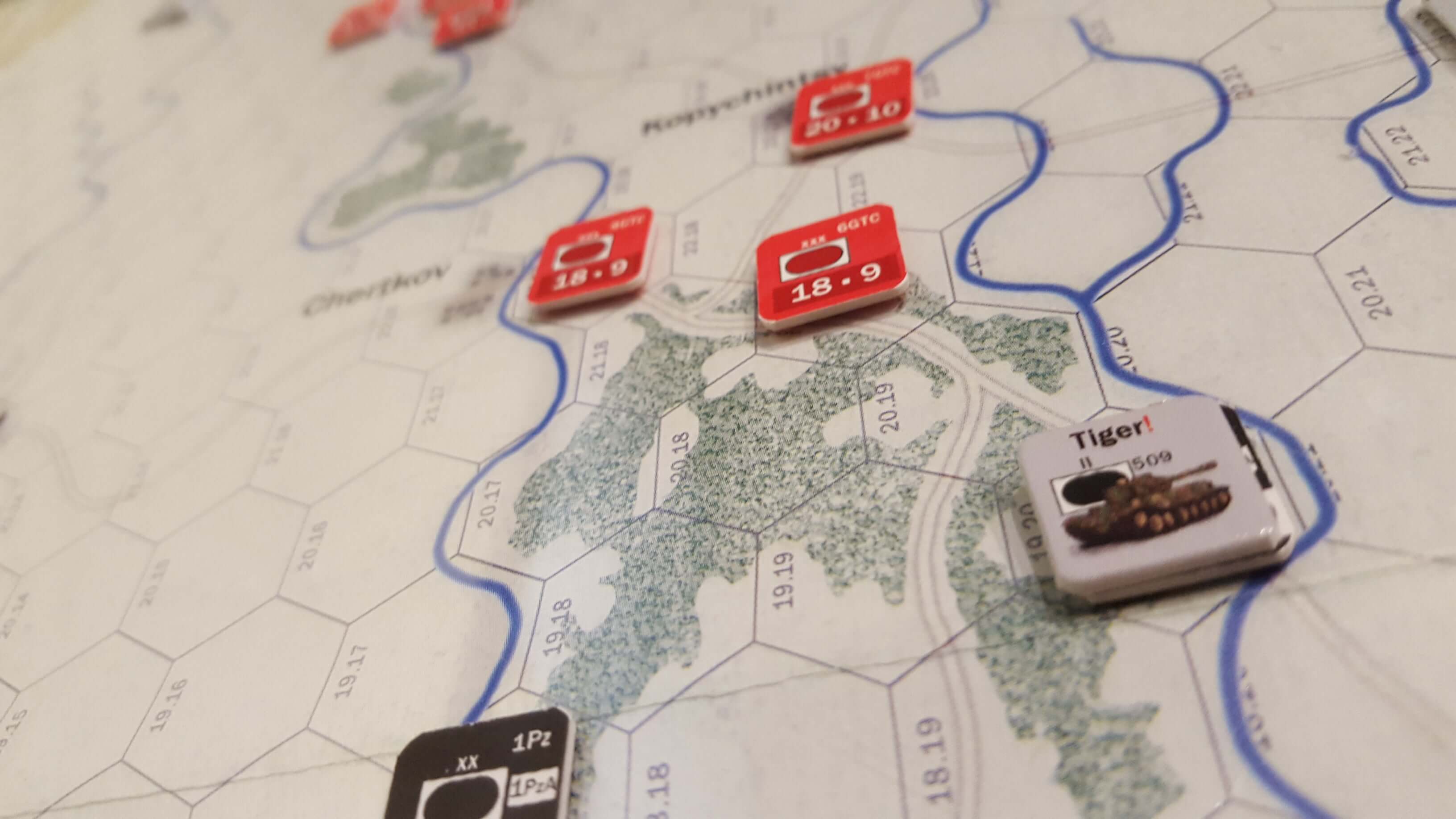
Now the risks inherent in the end run by the Soviets are made obvious. Unsecured flanks lead to isolation and OOS conditions. Which the Soviets attempt to stop gap with weaker infantry units. You will note that every attack suffers losses for both sides. 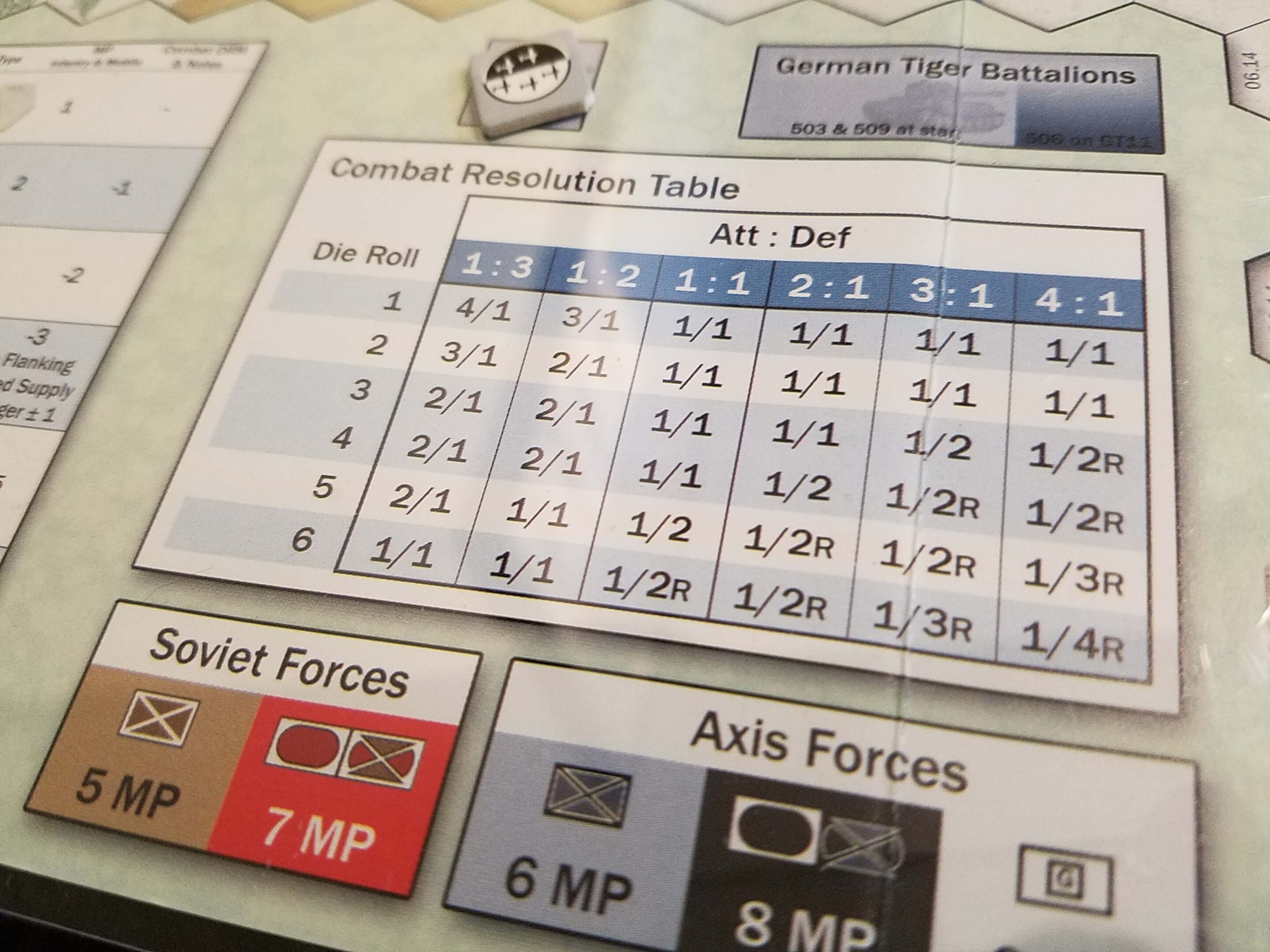
The Germans can hang tough but do pay a price. They can also blunt and advance and attack by counter attacking effectively.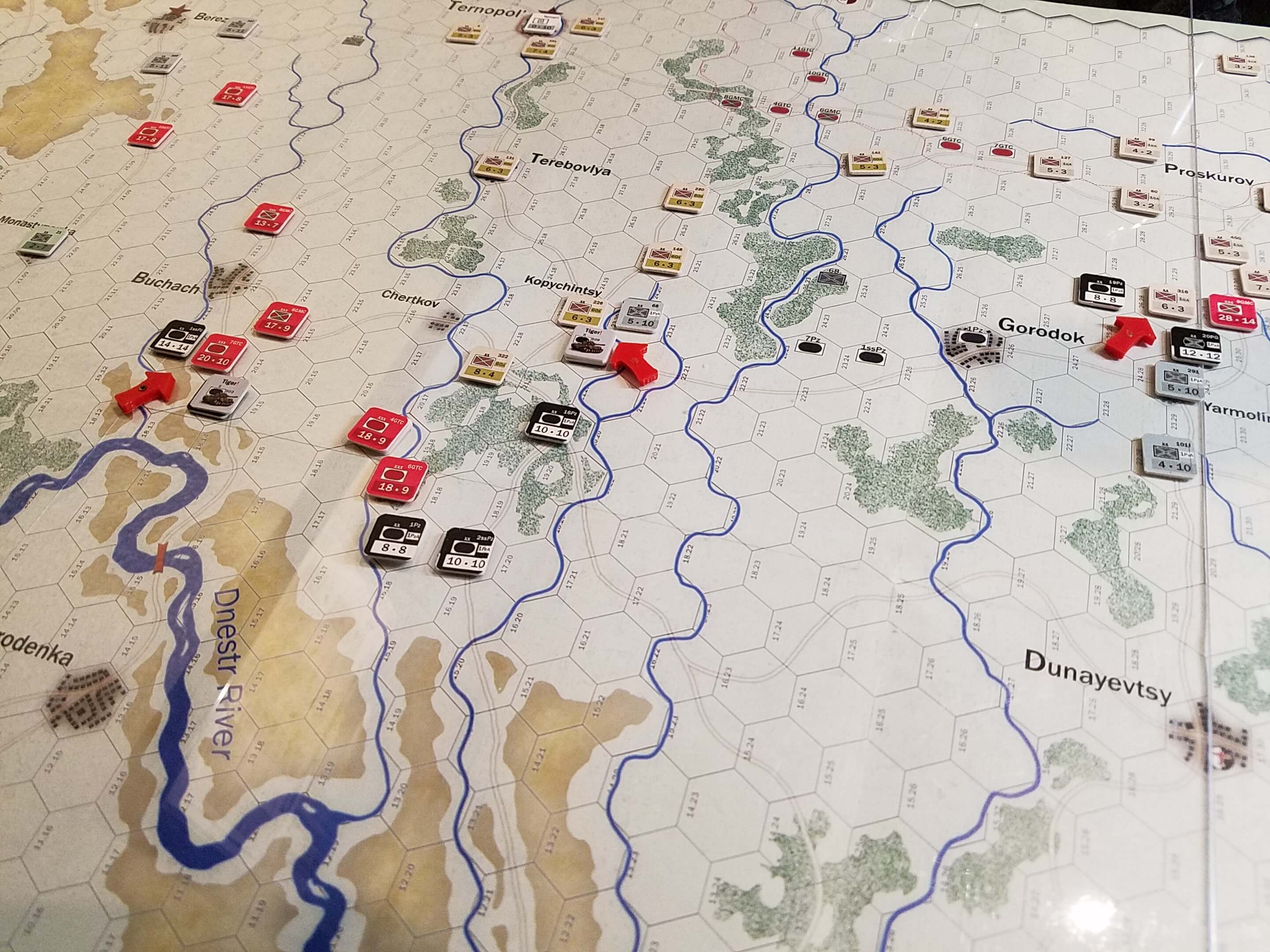
As the red arrows below indicate the Germans see an opportunity to weaken the supply status of the main thrust.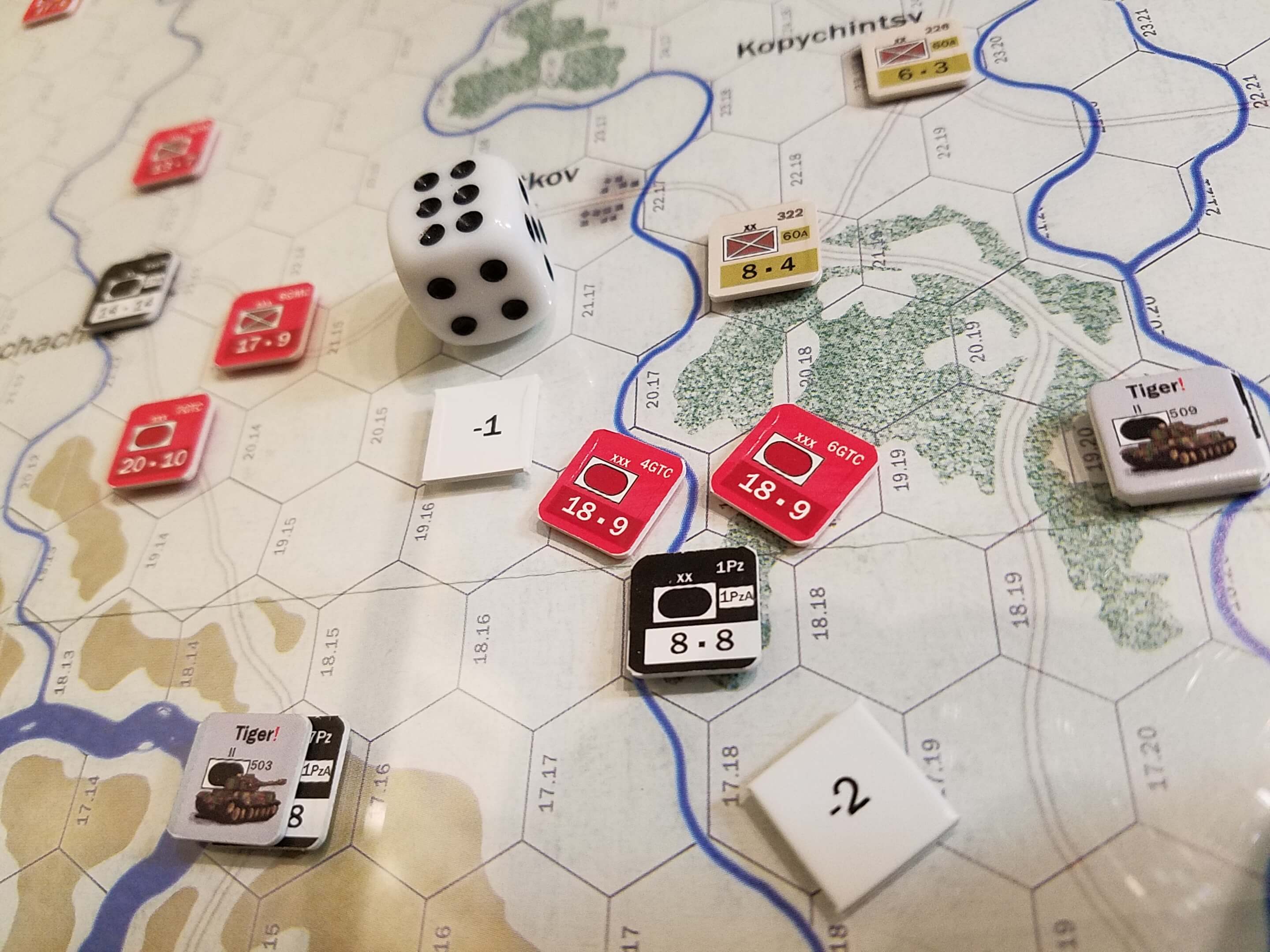
Down near Brichen Sat the Germans counter hoping to dull the offensive punch of the Soviets. [each step loss reduces the attack and defense strength by 1]
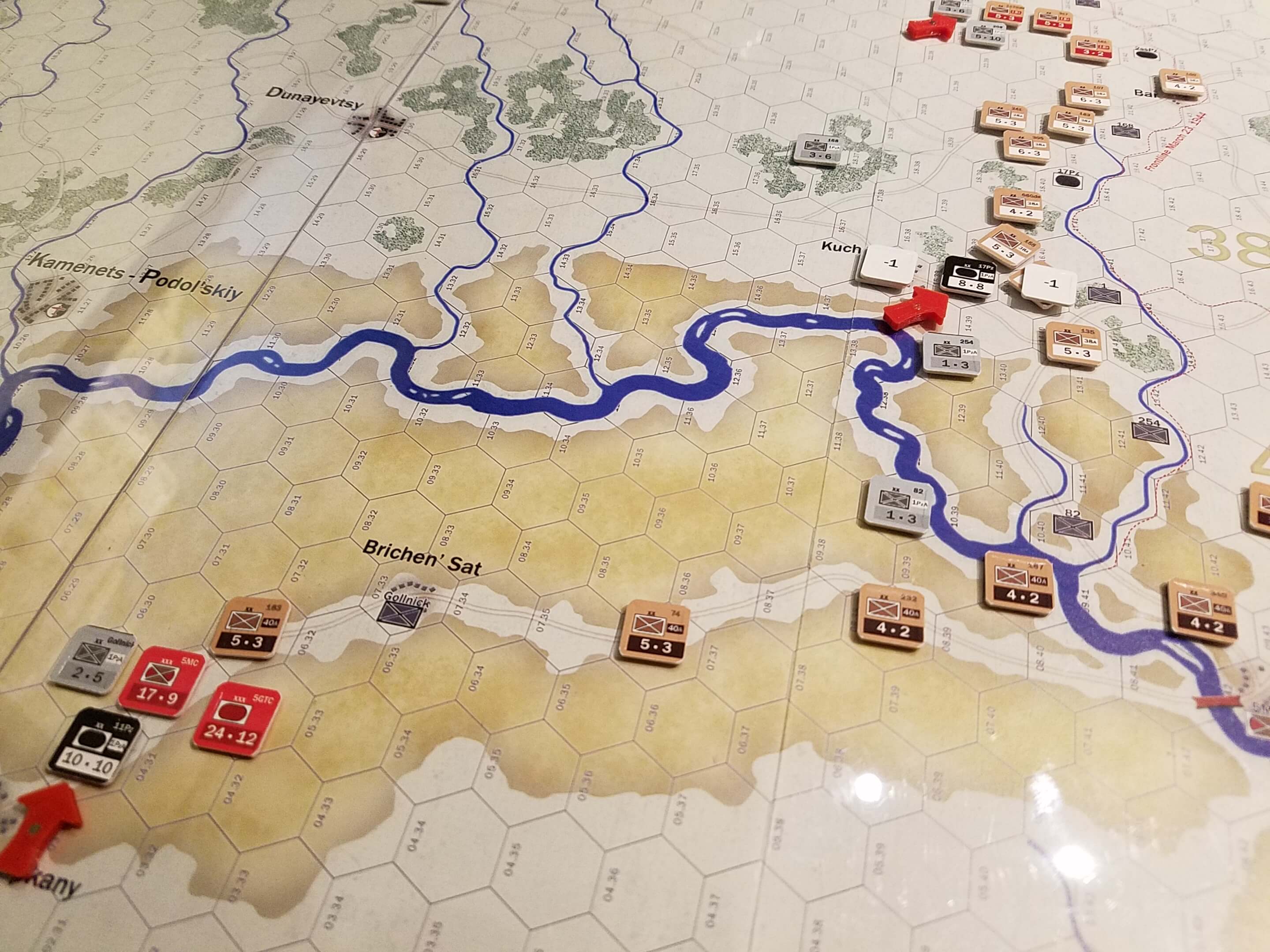
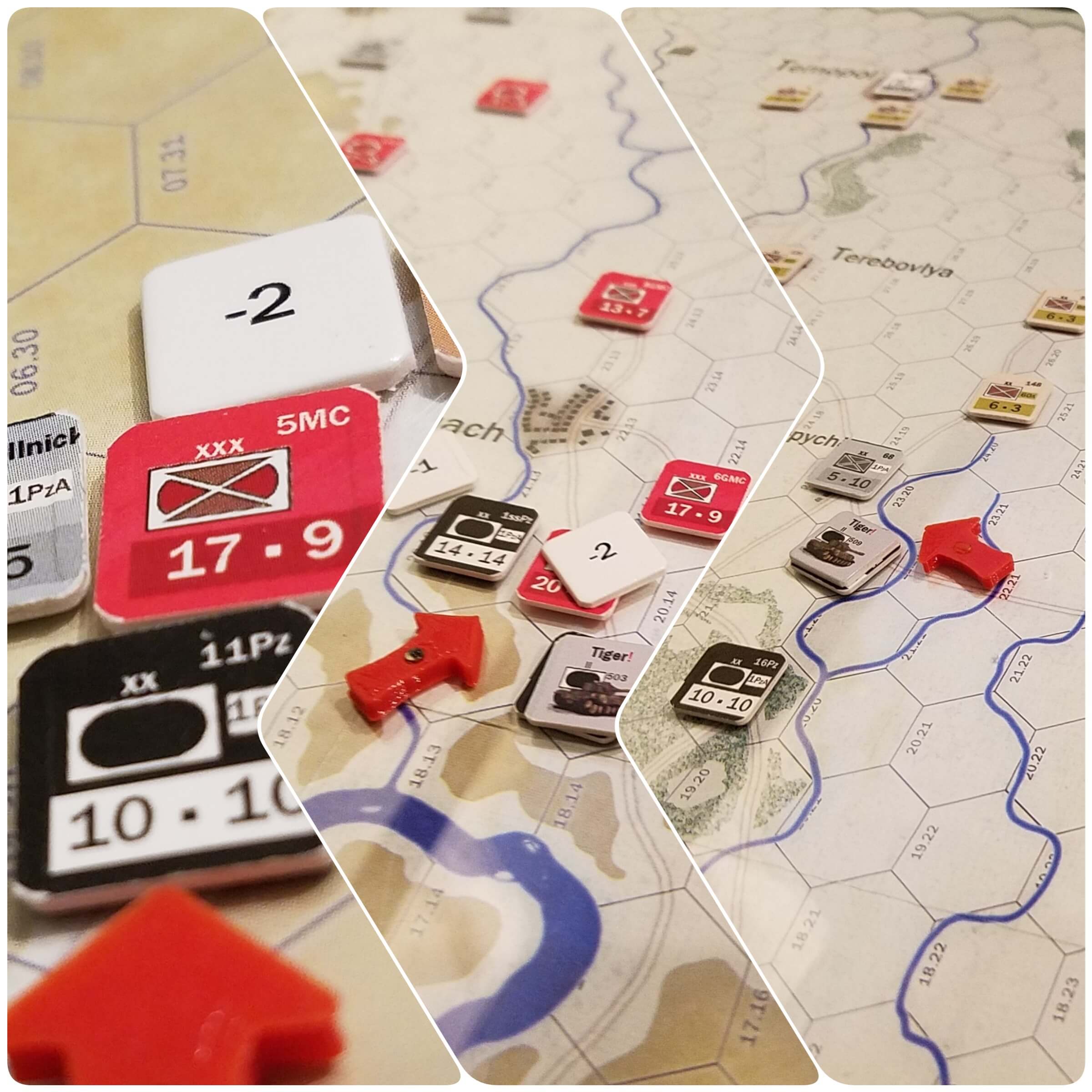
Further west the Soviets now run into supply issues. 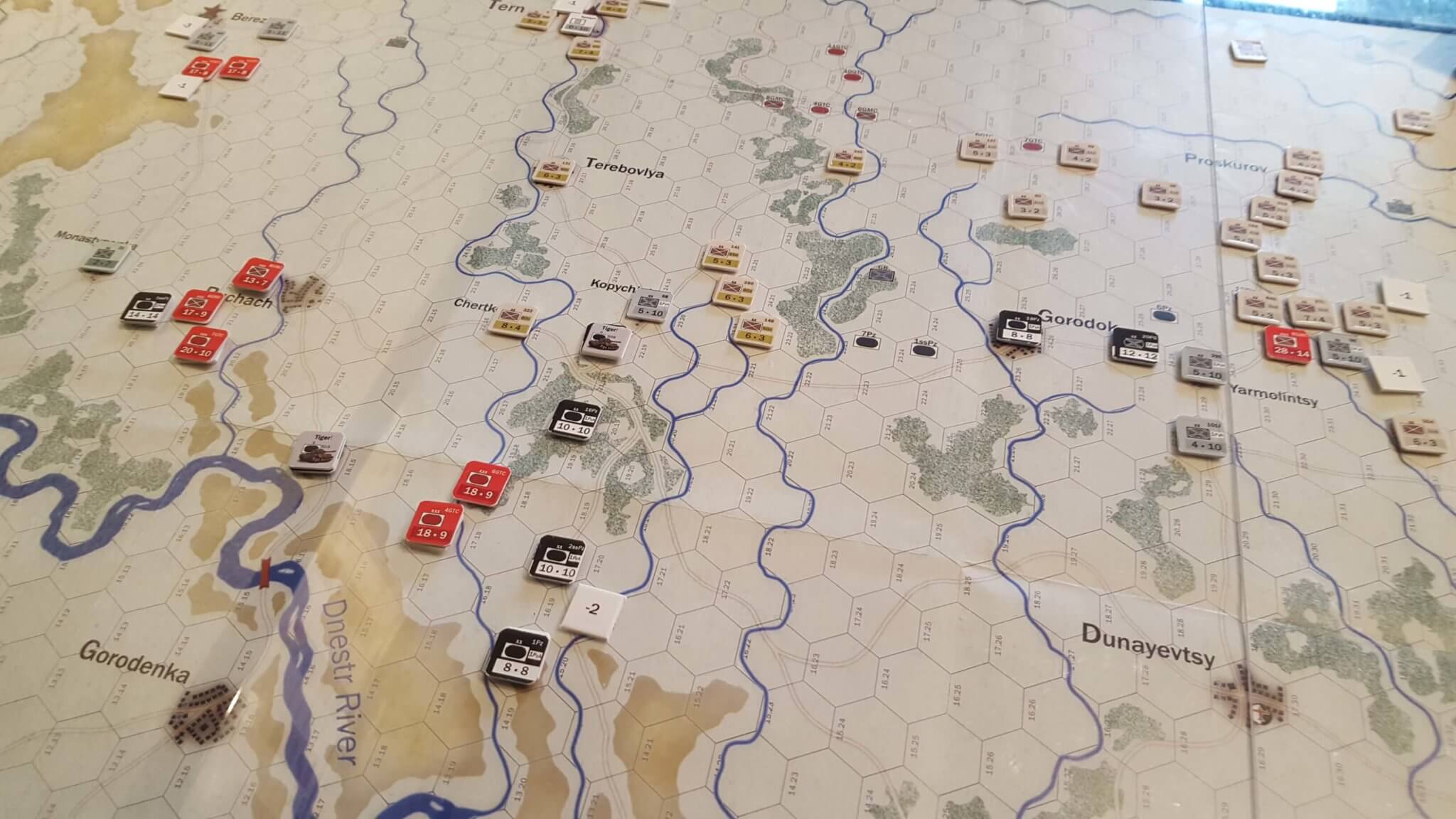
As do the leave behind German defenders.
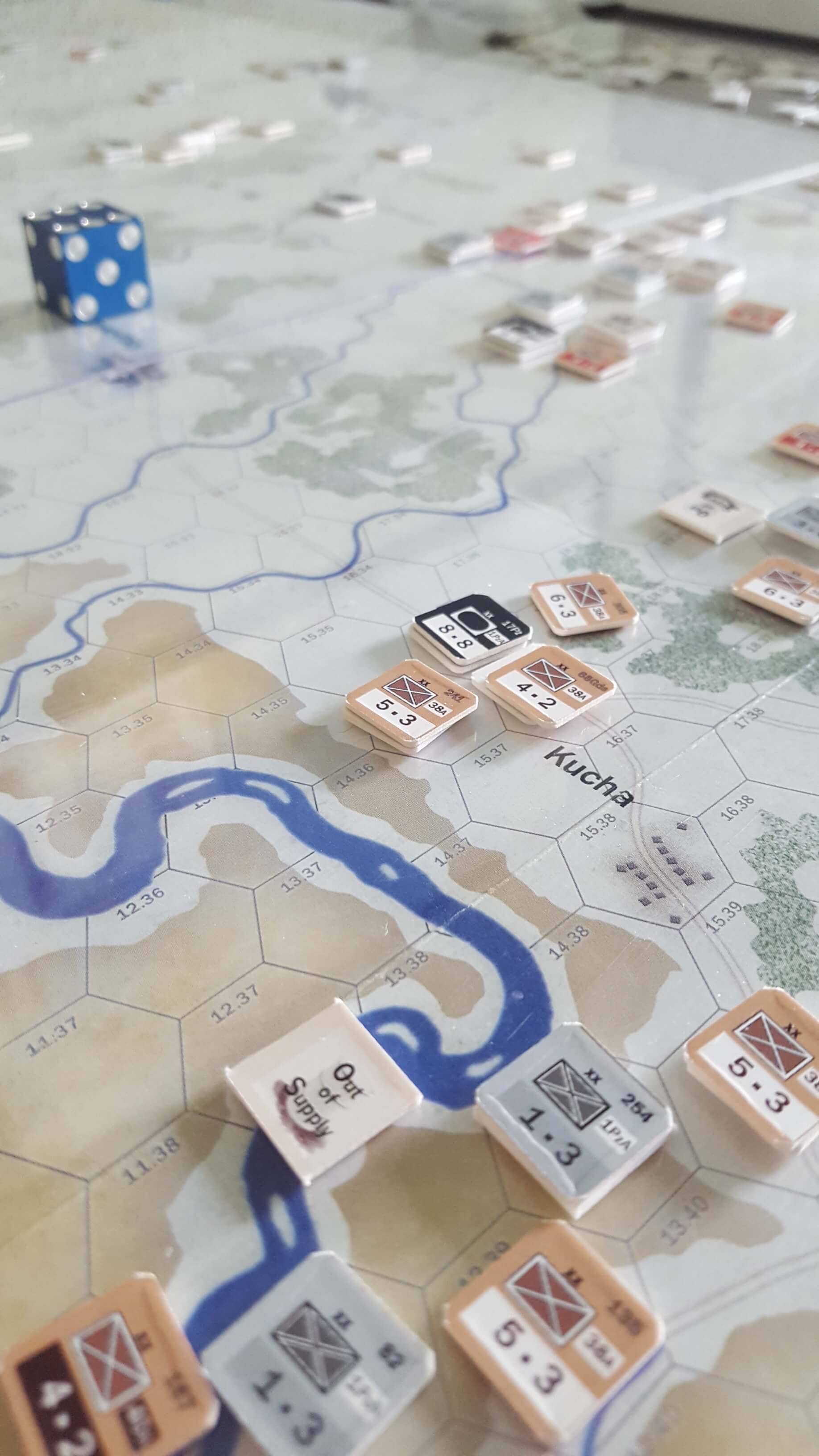
One of the quirky things is the nature of the units combat factors for offense and defense. Making it hard to get good odds on German Infantry divisions, who defend very well but have limited punch in offense. Then you have Soviet units with large punch but relatively fragile defensive numbers, which make them easier to kill [once defense steps =0 unit is eliminated].
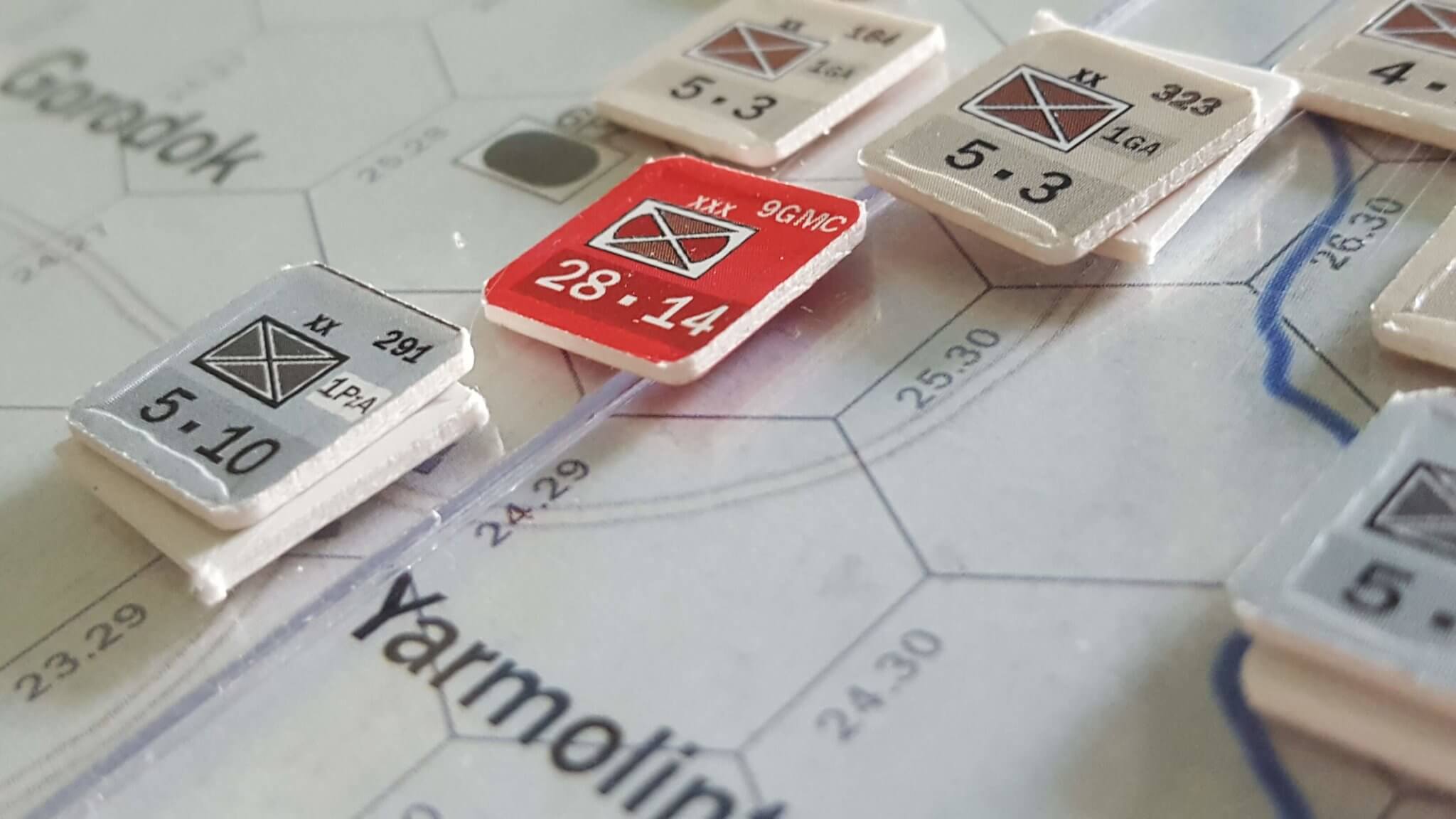
I’m really enjoying the tactical challenge here.
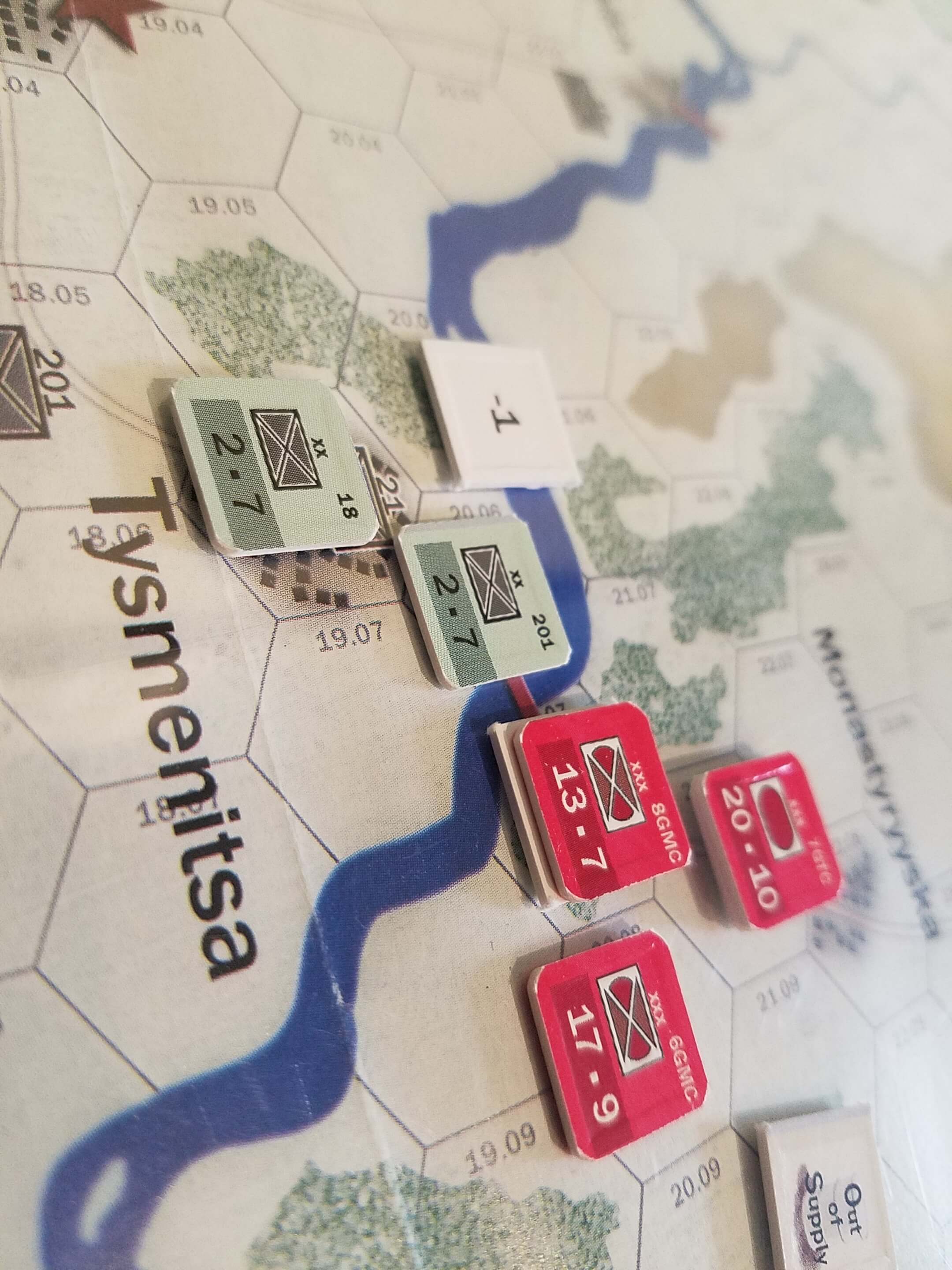
Here is a great example the disparity in factors; a Hungarian division able to hold a Mech Infantry Corp at the river line while the Soviet is out of supply.
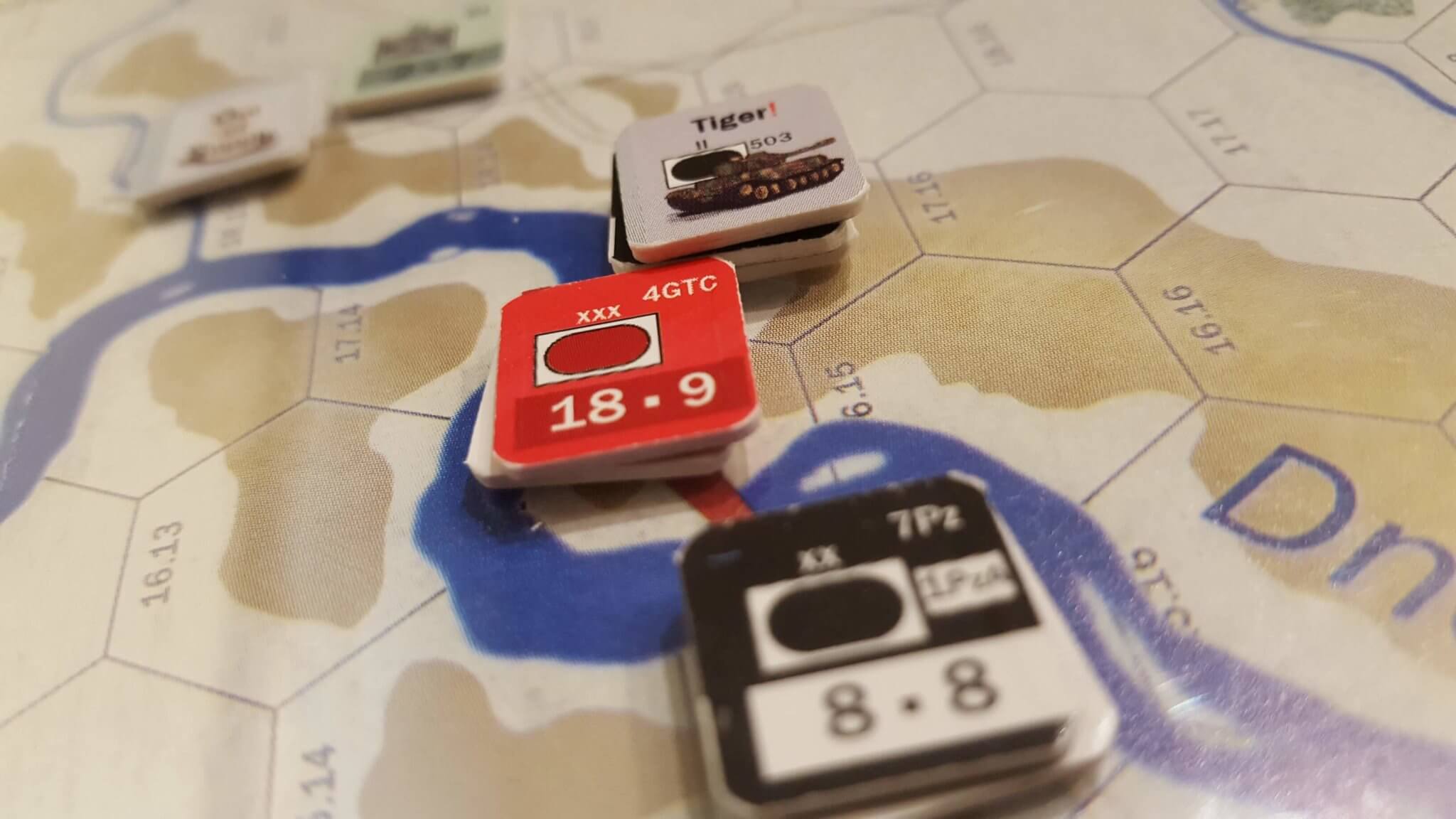
Trapped!
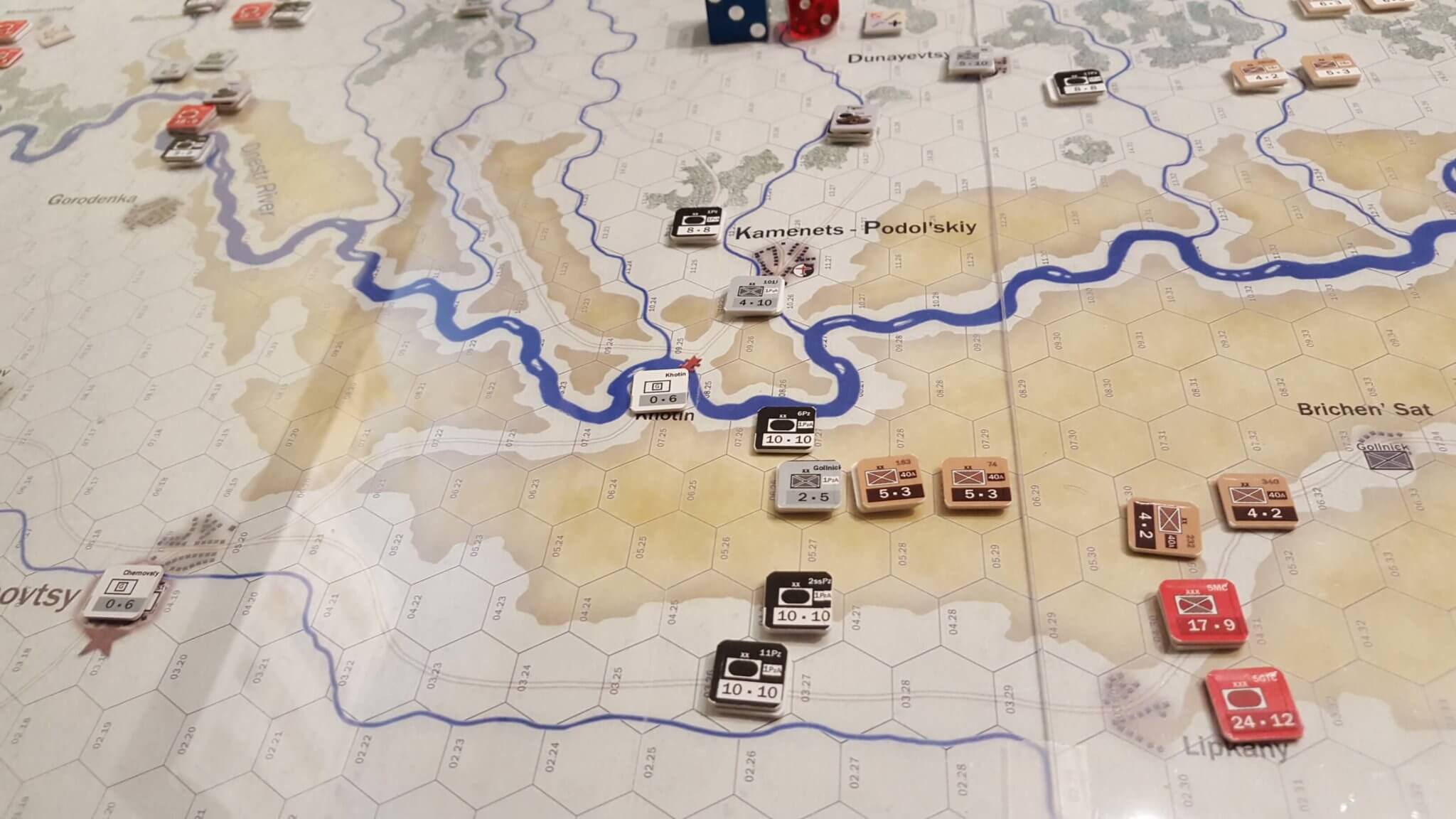
But the noose tightens.
More soon.
